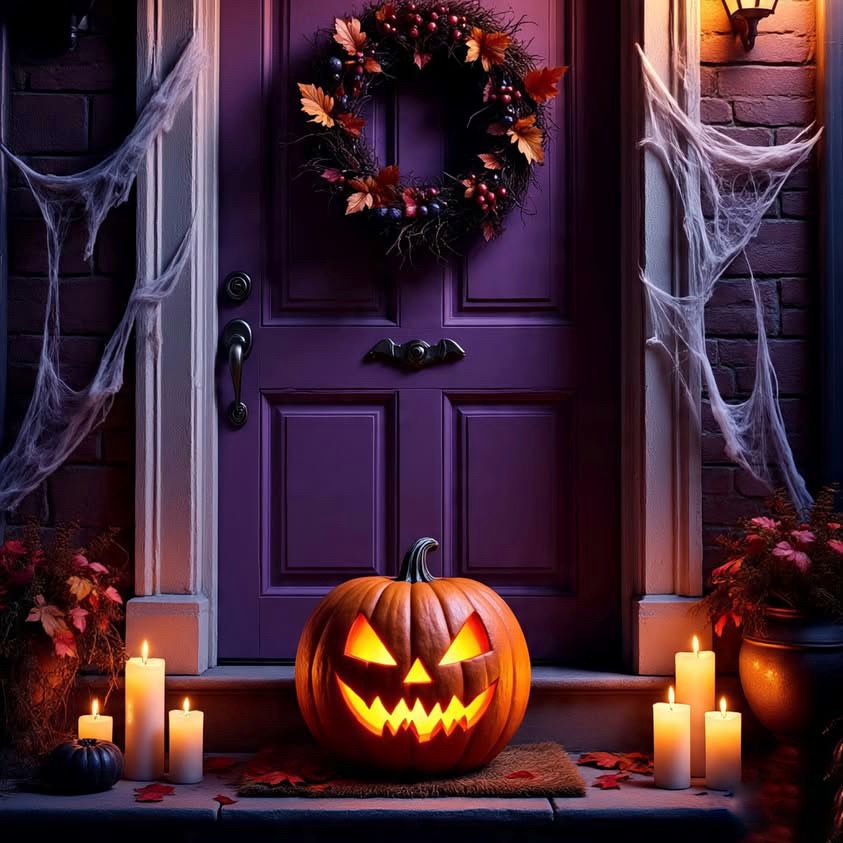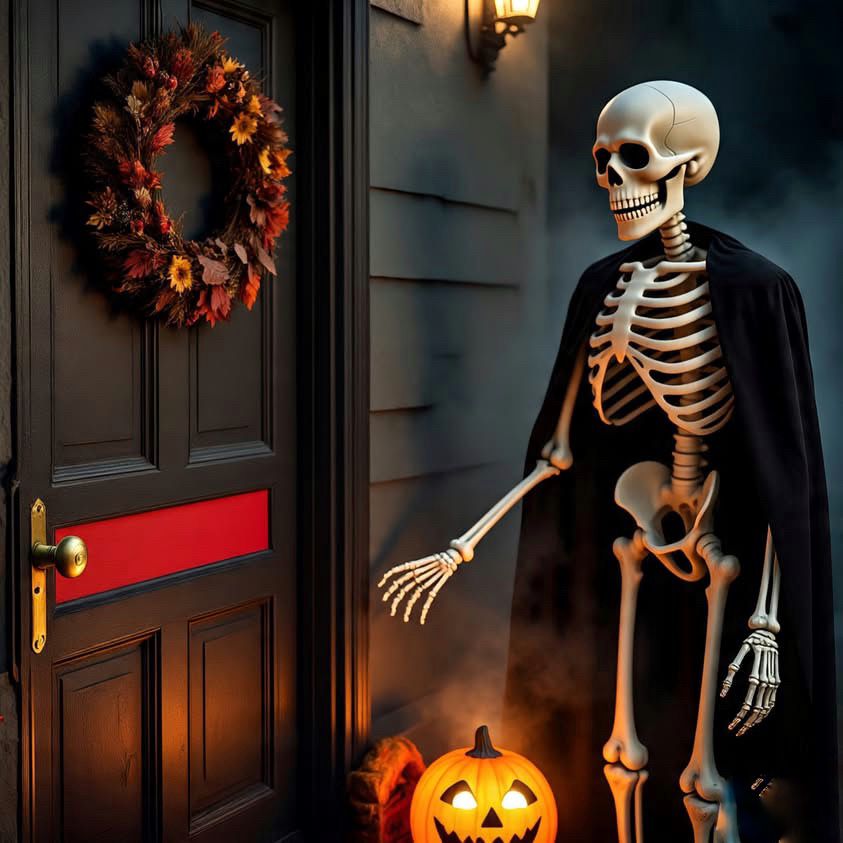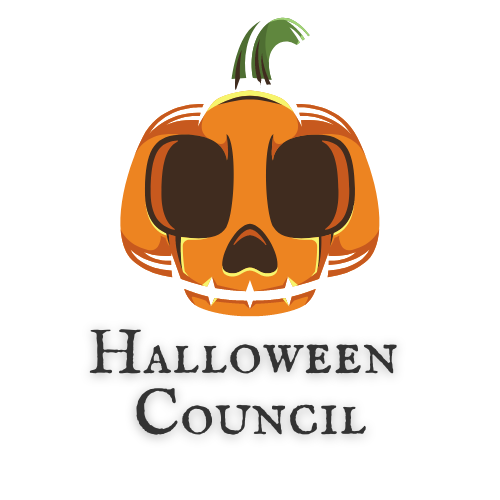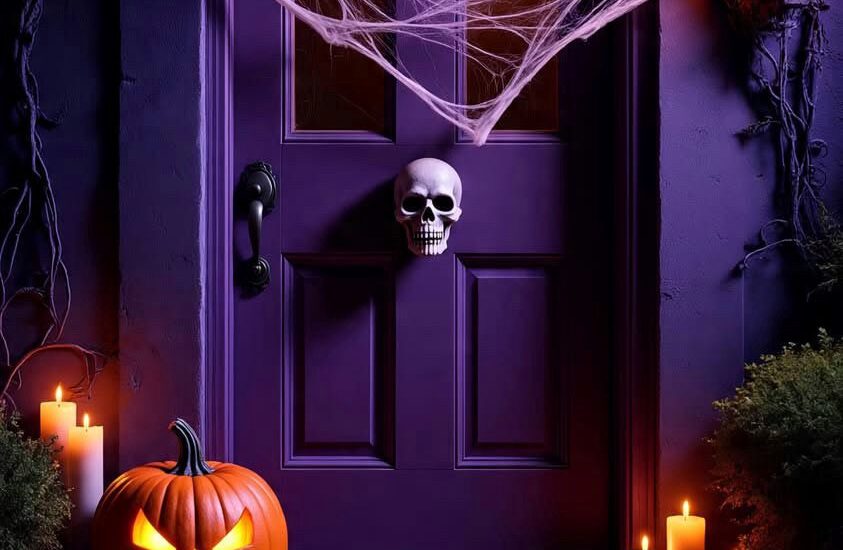When October rolls around, I find myself standing in front of my house each year, coffee in hand, wondering how I can outdo the neighbors this time. The front door has become my Halloween canvas, and honestly, creating that perfect creepy entrance has turned into something of an obsession. You know that feeling when someone walks up to your door and actually hesitates before knocking? That is exactly what I am going for. Transform your entrance with lighting, props, and atmosphere.
The beauty of Halloween door decorations lies in their ability to set the entire mood before anyone even steps inside. I learned this the hard way after spending hundreds on interior decorations one year while leaving my entrance looking like any other day in October. The trick-or-treaters barely slowed down. That experience taught me that your door is the star of the show, the first impression that tells everyone whether they are about to enter a haunted mansion or just another house giving out candy.
Starting with the basics might sound boring, but hear me out. A simple black or deep purple fabric draped across your door frame creates an instant transformation. I picked up some cheap fabric from a discount store last year, and it made my boring white door disappear completely. The way the material moves slightly in the breeze adds an unexpected element of unease. People do not expect things to move on their own, even if it is just fabric catching the wind.

Layering is where things get interesting. Once you have that base covered, literally, you can start adding dimension. I am a huge fan of those realistic spiderweb materials that stretch and cling to surfaces. The key is not to make it look too perfect. Real spiderwebs are messy and random, so I spend time pulling and stretching the material unevenly across corners and edges. Sometimes I will leave sections hanging loose or create thick clusters in certain spots. Adding plastic spiders of various sizes makes it even more convincing, and I always position at least one really large spider right at eye level. That placement is crucial because it catches people off guard when they are focused on knocking or ringing the doorbell.
Lighting deserves way more attention than most people give it. I wasted years thinking those orange string lights were enough until I discovered what proper creepy lighting could do. Red and purple LED lights change everything. I position them low, near the ground, shining upward. This creates shadows that fall in all the wrong directions, making even friendly decorations look sinister. The human brain is wired to expect light from above, so when shadows fall upward, it triggers something primal and uncomfortable. I also learned that flickering lights work better than steady ones. That unstable, unreliable quality suggests something is not quite right, like the power is struggling or something supernatural is interfering.
Props and decorations need to tell a story rather than just exist as random scary things. My door usually features a theme each year. One October I went with an abandoned asylum concept, complete with a torn patient wristband hanging from the doorknob, fake bloodstains trailing down the door, and a sign that read Quarantine Zone. Another year I created a witching hour entrance with a broom leaning against the frame, potion bottles scattered on the porch, and a cauldron with dry ice creating that low lying fog effect. The dry ice is genuinely worth the hassle, by the way. Something about that creeping fog makes people instinctively step back.

Sound adds another dimension that most people overlook completely. I mounted a small Bluetooth speaker inside my wreath last year and played subtle creepy sounds on loop. Not the obvious screaming or chain rattling, but quieter things like distant whispers, slow breathing, or the sound of something scraping against wood. These sounds sit just at the edge of perception, making visitors wonder if they actually heard something or if their mind is playing tricks on them. That uncertainty is far more effective than jump scares.
Personal touches make your Halloween door decorations memorable. I write messages in fake blood on the door itself using washable paint. Things like “Turn back” or “Enter if you dare” work well, but I prefer more ambiguous phrases like “They are waiting” or “You should not have come.” These messages raise questions without providing answers, and that lingering curiosity sticks with people.
The wreaths deserve special mention because they anchor the entire display. Forget the cute autumn wreaths with pumpkins and leaves. I construct mine using black branches, ravens, skulls, and dead flowers. Last year I added small battery-operated eyes that glowed red from within the wreath. The effect was subtle during the day but absolutely chilling after dark when those eyes suddenly appeared to be watching from the shadows..
Reference
Bargh, J. A., & Chartrand, T. L. (2000). The mind in the middle: A practical guide to priming and automaticity research. In H. T. Reis & C. M. Judd (Eds.), Handbook of research methods in social and personality psychology (pp. 253–285). Cambridge University Press.
Mori, M. (1970). The uncanny valley. Energy, 7(4), 33-35. (Translated by K. F. MacDorman & T. Minato, 2012).
Sarbin, T. R. (Ed.). (1986). Narrative psychology: The storied nature of human conduct. Praeger Publishers/Greenwood Publishing Group.

